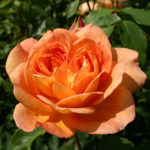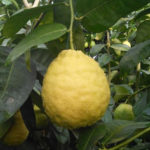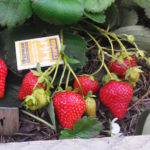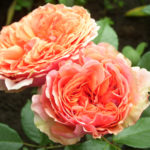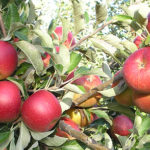Rose Brothers Grimm (Gebruder Grimm)
Surely in your flower garden you would like to see the best varietal crops. And first of all, these are, of course, roses. You will not have any problems with the choice: we offer you both new selection and time-tested varieties. Settle a species with the fabulous name Brothers Grimm on your plot - and it will steal your heart forever.
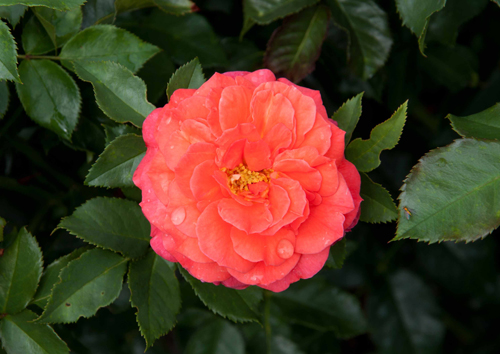
History of origin
This delightful flower was bred by German breeders in 2002. The specific place of origin of the variety is the Kordes nursery, well-known in Europe. This culture is the owner of numerous awards and the winner of various flower competitions. So, in the year of her birth, she received the BUGA Gold Medal in Potsdam, the Silver Medal in Kortrijk and the Bronze Medal in Rome. The 2005th year brought the German beauty a certificate, which was presented in Glasgow, and the 2006th year - a similar award, but already at the exhibition in Toproos. She also has a British RNRS certificate. The variety has been awarded the ADR quality mark. The noble plant is also known to the world under the names Gremlin, Eternal Flame, Joli Tambour and Brothers Grimm Fairy Tale. Registration name of the flower: KORassenet.
Description of appearance and features
Gebruder Grimm stands out from all the existing variety of floribunda roses for its unique colors. The flowers blooming on it first delight the eye with an orange luminous shade and a sandy yellow inner surface of the petals. In the future, the inflorescences acquire a raspberry-pink color. Perennial flowers are lush, double and large (up to 11 cm in girth), are formed on the plant in groups of 3-5 pieces. The culture looks very romantic - it is not for nothing that it is included in the Marchenrosen series, which means "Fabulous roses" in German. The flower shape of the extraordinary variety can be described as nostalgic. The Brothers Grimm inflorescences amaze the imagination not only with their incomparable beauty, but also with a quite tangible and at the same time delicate, unobtrusive, delicate aroma. The culture blooms profusely throughout the season, almost without interruption, which makes it feel like the bush is constantly covered with wonderful flowers.
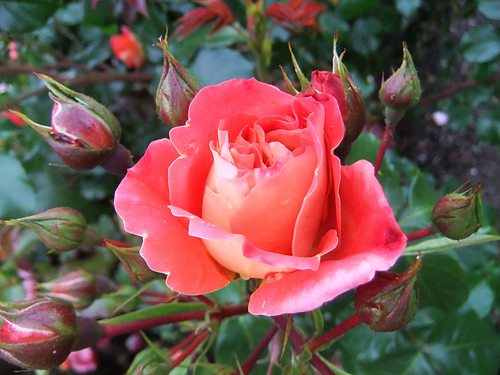
Other botanical features of the culture: not too impressive perennial height (up to 90 cm), the presence of a large number of bright, dark green, large, highly shiny leaves; the relative strength of the shoots. Gebruder Grimm is a vigorous, vigorous plant prone to branching. Despite its small width (about half a meter), the shrub looks quite voluminous. Perennial stems are densely leafy. The shrub requires support and tying, especially during the flowering phase.
The incomparable beauty is very resistant to severe frosts and temperature fluctuations, to diseases (primarily powdery mildew and black spot) and insect pests. Flowers and dense rose buds are not afraid of even the heaviest rain, which does not knock them off the bush and does not cause loss of shape. The inflorescences are also resistant to summer heat: the bright color does not fade in the sun, and the delicate petals themselves do not bake under the influence of high temperatures. In general, the Brothers Grimm is the dream of any florist.
Growing and care
A fabulously beautiful flower is recommended to be planted on the sunny side of the site. He loves warmth, so you should not place the crop in a lowland, where the air is cooler and, moreover, moisture stagnation may occur after rain. The plant should be protected from drafts.
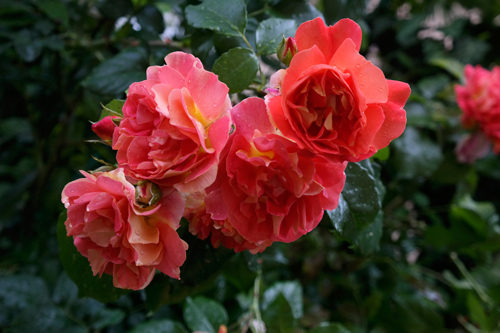
The soil of an ornamental flowering perennial needs light, loose, with a high level of fertility. The reaction of the soil used for planting the rose should be slightly acidic. In the chosen place, you need to make a hole about 0.6 meters deep and the same width. A drainage layer is laid at the bottom of the planting pit: for example, fine gravel. Organic fertilizer is poured next: compost or stale humus. At the end, the pit is covered with the remaining substrate and the plant is planted directly. Be sure to spread the roots of the culture, after removing diseased and damaged roots.The buds should be 2-3 cm below ground level. In addition, it is important to maintain some distance between plants when planting.
The Brothers Grimm, a bright beauty, needs to be carefully looked after: in a timely manner, as the upper soil layer dries up, water; periodically fertilize, loosen the soil under the perennial, mulch the soil around the plant after watering, perform spring and autumn pruning of shoots. Only soft, slightly warm water is needed for watering. A nitrogen complex is used as a fertilizer in the spring, phosphorus-potassium concentrates are used in the summer, during the formation of buds and the appearance of inflorescences. They loosen the soil under the rose bush a day after each watering. Peat, sawdust and dry grass are suitable for the role of mulch.
Spring pruning of the Gebruder Grimm floribunda should stimulate new shoot growth and early flowering. To do this, she must be weak. Strong pruning of the plant is contraindicated, since such an event will lead to the stretching of the stems of the rose bush and the flowering of the culture only at the end of summer, or even in the month of September. Too thin, weak, dry twigs and stems with damage should be removed during pruning. In the fall, this procedure is needed to prepare the rose for a successful wintering. It consists in cutting off leaves and old inflorescences from the bush, shortening the perennial stems to a length of about 40 cm. After the culture, it is recommended to spud dry earth to a height of 30 cm and cover with spruce branches.
Use cases
The Brothers Grimm variety is suitable for placement in single and group plantings. In the first case, it will look great against the background of a bright grassy lawn or the needles of evergreen plants located behind the bush. The flower can be combined on the site with white, pale yellow, pale pink and cream roses. Combinations of a European beauty with clematis, phlox, delphiniums, cereals, fragrant flowering herbs are successful. The variety is often used to decorate low hedges and borders.
